Accidents Abroad
No risk, no reward. But for some adventurous top spots, the risk can far outweigh the reward. We looked at the top destinations for adventure travel and ranked them on several factors, including likeliness of risky activity, the court system for suing after personal injury, safety standards of each country, and availability of proper medical services. Check out the infographic below to learn more about which countries are living on the edge.
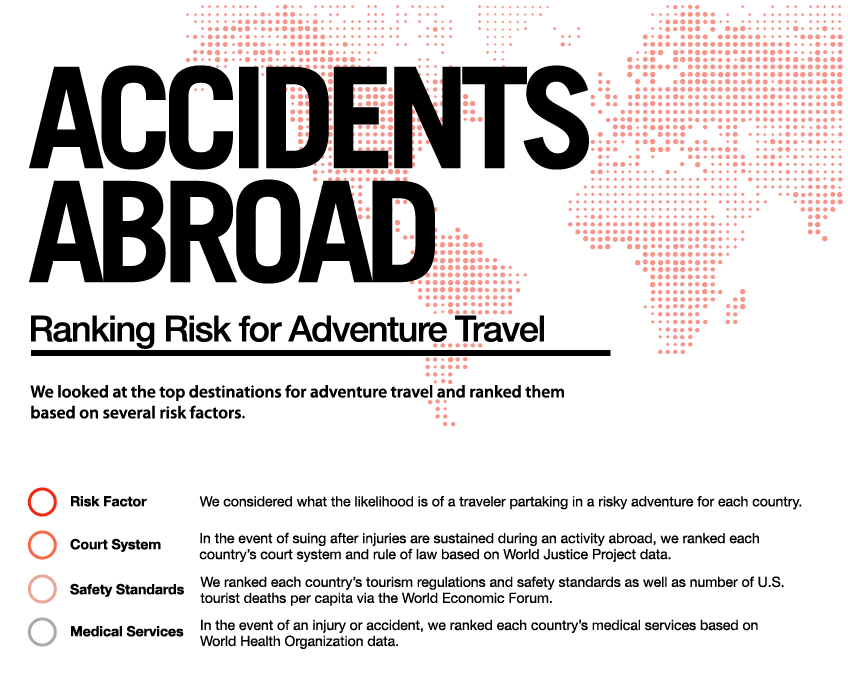
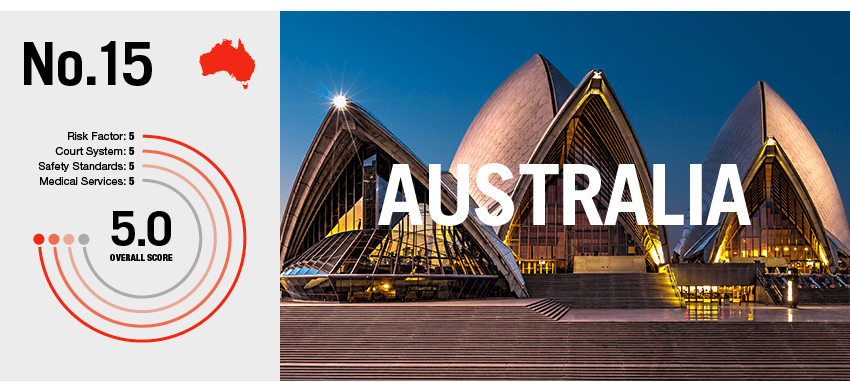
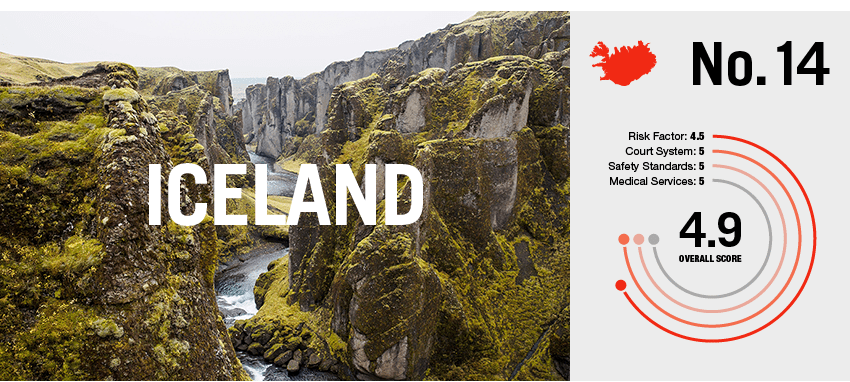
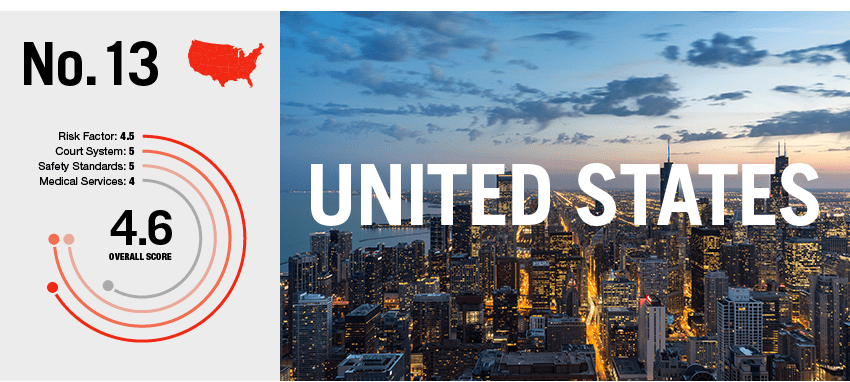
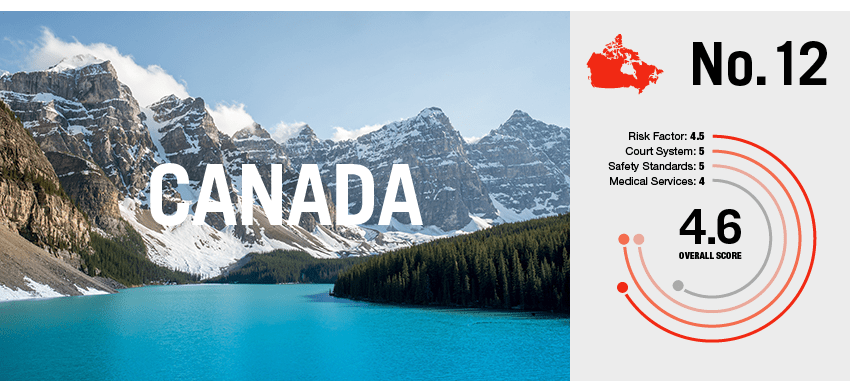
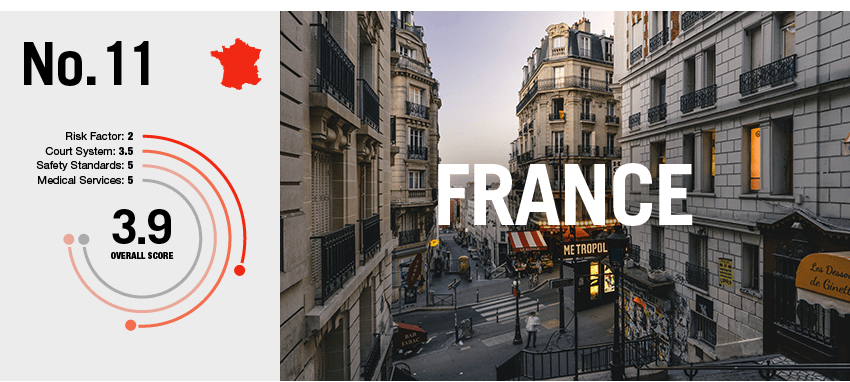
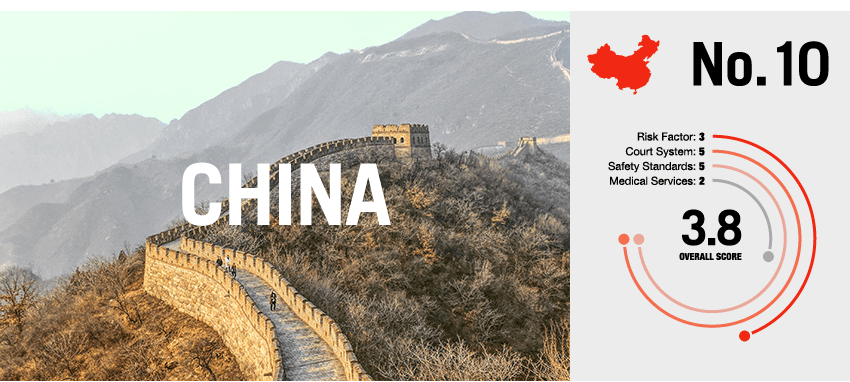
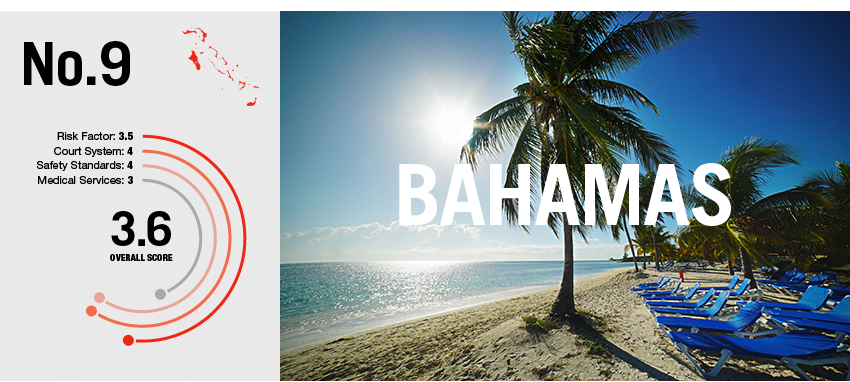
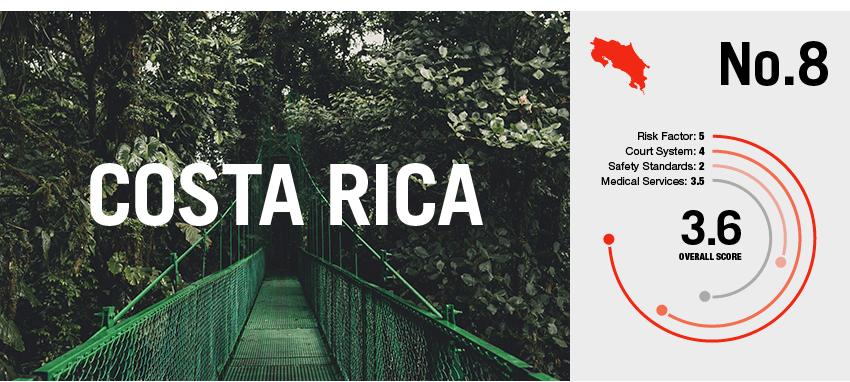
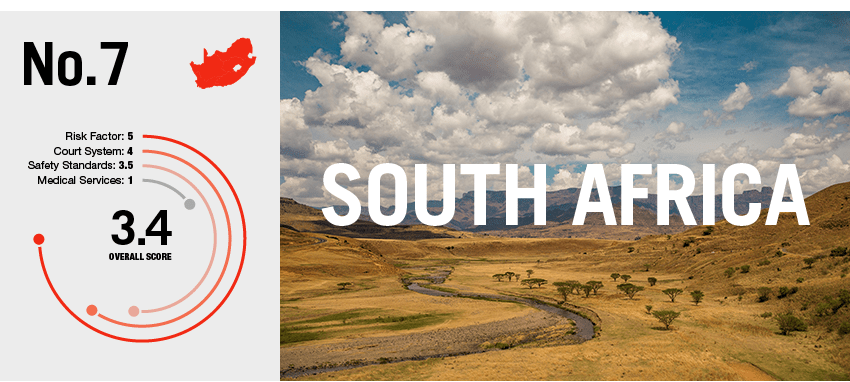
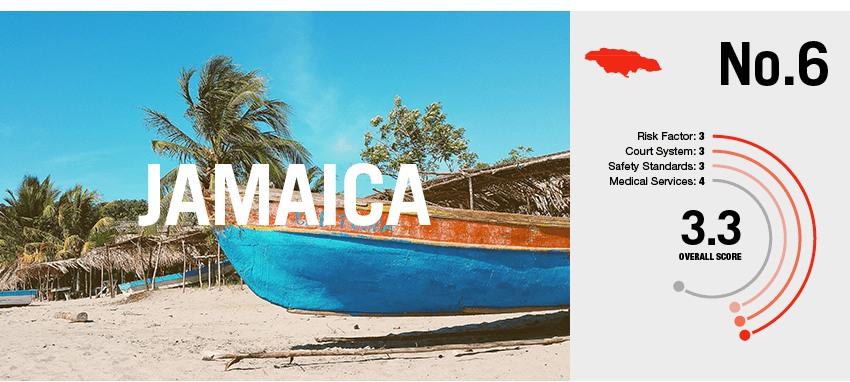
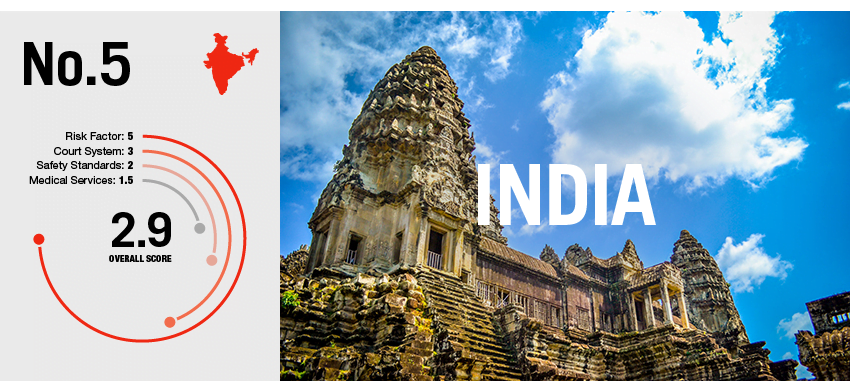
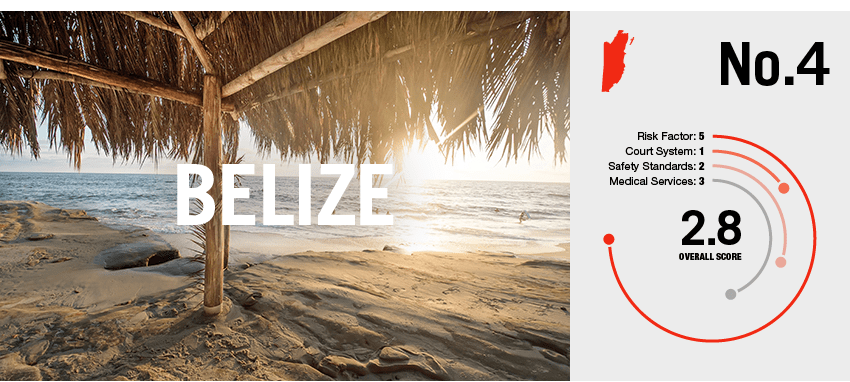
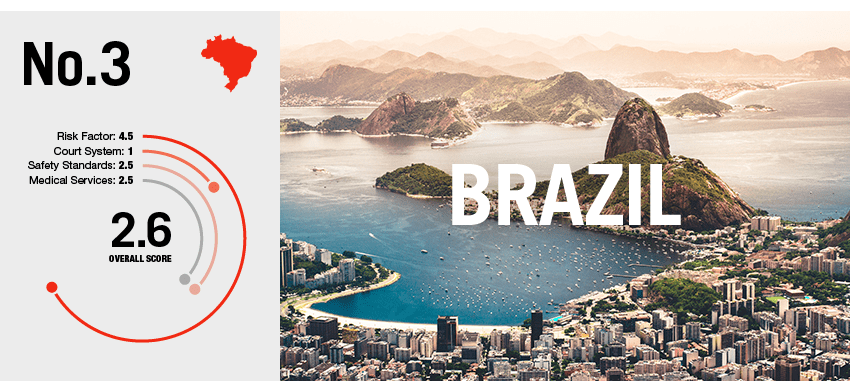
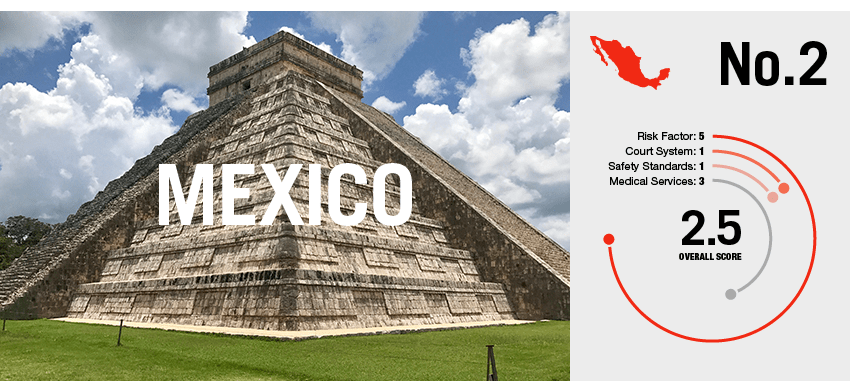
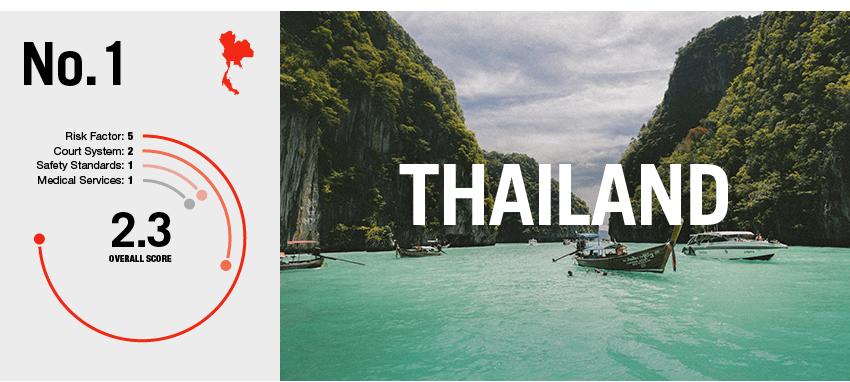
Assessing the riskiness of adventure for each country can be subjective; what looks adventurous to some may be child’s play to others, and vice versa. However, some countries are riskier places simply because the combination of unreliable medical services, sub-par safety standards, and an unsympathetic court system can make a thrilling activity, like bungee-jumping, far more risky in a country lax in those areas.
Which is why the number one destination for adventure travel is also considered the riskiest: Thailand. With wild jungles, open sea, and densely populated urban areas, there is no shortage of activities to get the adrenaline pumping. However, when it comes to safety arbiters, such as medical services and safety standards, Thailand scores the lowest (2.3 overall). Case in point: in 2015, a zip line company was sued because a woman collided with another while careening through the jungle zip line course. The family of the hurt woman had to pay for a Flight for Life helicopter to transport the hurt woman to a hospital that could hand the trauma. Without proper safety protocol and being miles from modern medical facilities means that if you’re looking to engage in death-defying activities, best to do so somewhere other than Thailand.
Other top destinations have similar risk scores: Mexico is 2.5, buoyed by a “not terrible” medical services score; Brazil is 2.6 because of mid-level safety standards and medical services; and Belize is a 2.8, thanks to good medical, so-so safety, and poor court processes.
If thrill-seekers simply must throw caution to the wind, it is best to head to the top destinations for adventure activities. Australia scores a perfect 5 for risk factors, thanks to the high-ranking medical, safety, court, and risk. The country relies a heavy on tourism—in 2017, Australia welcomed 8.7 million international visitors!—so it’s imperative to be able to protect and keep visitors safe to keep them returning.
Other top destinations for adrenaline junkies include Iceland (4.9 score), the United States (4.6 score) and Canada (4.6 score), thanks to easily available medical care, high safety standards, and fair (if lengthy) court processes.
While some risk-takers might enjoy the dangerous element of extreme sports and activities, it’s fair to say that even thrill-seekers prefer to avoid unnecessary pain and distress. When countries embrace the reality that people will engage in risky activities, and invest in proper safety and medical services, both participants and host countries can come out on top.
Sources:
- World Justice Project
- World Health Organization
- TripAdvisor
- World Economic Forum
- U.S. Department of State
- FIA Foundation
- The Telegraph
- Adage

Protect Your Rights
Contact our team today to get started on your case. There are no fees unless you collect.
